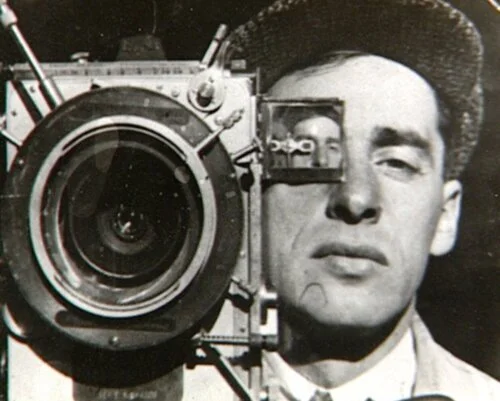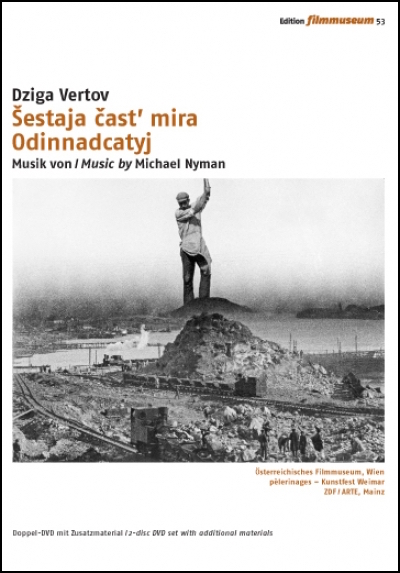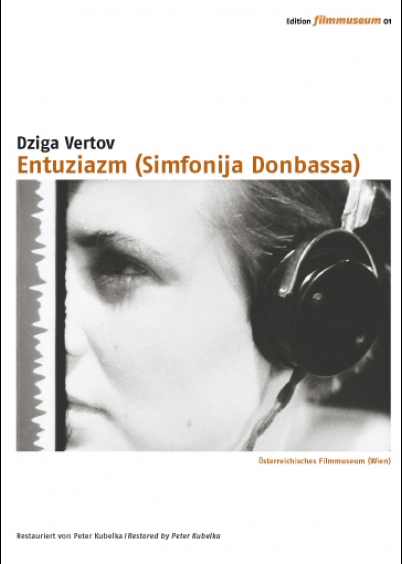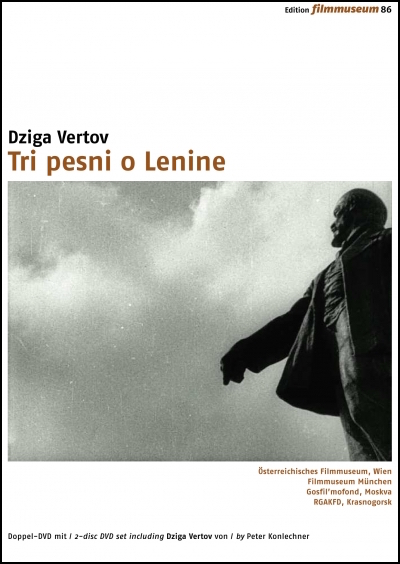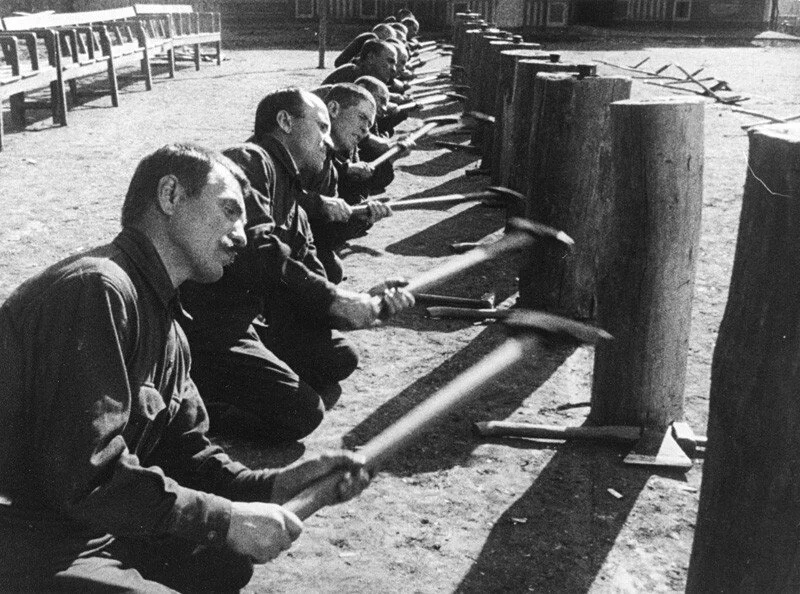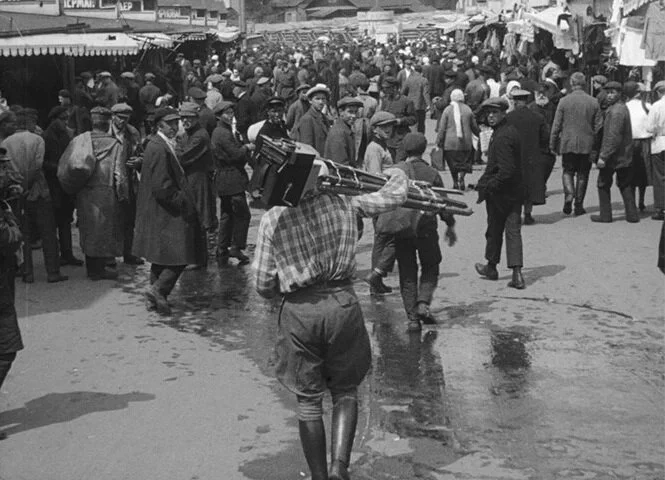GME STREAMLINE CELEBRATES NATIONAL POETRY MONTH THE FILM POETRY OF DZIGA VERTOV NOW AVAILABLE AS DVD/DIGITAL SITE LICENSE BUNDLES
/GME Streamline celebrates National Poetry Month and the DVD/DSL bundle release of the landmark films of Dziga Vertov. Sharing with poetry concepts of sound and rhythm through shot and montage via his "Kino-Eye" aesthetic, Vertov created one of the most innovative and influential bodies of cinematic work and theoretical writings in the history of moving image artistic expression. Through our relationship with Edition Filmmuseum - Vienna, GME can now offer, for the first time, digital site licenses of these pioneering works with the purchase of DVD/DSL bundles. The Vienna Filmmusum has developed a major focus on collecting, preserving, and studying key cutting edge works of Soviet cinema. A special focus has been on the work of Dziga Vertov. All three of the Vertov releases available here contain extensive bonus materials and related scholarly and historic essays.
Sharing with poetry concepts of sound and rhythm through shot and montage via his "Kino-Eye" aesthetic, Dziga Vertov created one of the most innovative and influential bodies of cinematic work and theoretical writings in the history of moving image artistic expression. Vertov’s Kino-Eye attempted “to give [back] the filmic to non-fiction film” as Barbara Wurm notes. Distinct from narrative entertainment cinema, Vertov endeavored to capture what is “inaccessible to the human eye” via his particular montage technique, as well as (in his own words) to “bring men closer to machines.” In his Kino-Eye Manifesto from 1923, Vertov wrote that:
"I am an eye. A mechanical eye. I am the machine that reveals the world to you as only the machine can see it. I am now free of human immobility. I am in perpetual motion. I approach things, I move away from them. I slip under them, into them. I move toward the muzzle of a race horse. I move quickly through crowds, I advance ahead of the soldiers in an assault, I take off with airplanes, I fall on my back and get up at the same time that the body falls and gets up. This is what I am, a machine that runs in chaotic maneuvers, recording movements one after the other, assembling them in a patchwork. Freed from the constraints of time and space, I organize each point of the universe as I wish. My route is that of a new conception of the world. I can make you discover the world you did not know existed.”
The poetic travelogue A SIXTH PART OF THE WORLD (1926) and the “visual symphony” THE ELEVENTH YEAR (1928) mark the beginning of Dziga Vertov’s most creative period, which peaked in the canonical film MAN WITH A MOVIE CAMERA (1929) (This film is available from GME in DVD format only, published by Flicker Alley). A SIXTH PART OF THE WORLD employs a travelogue format to depict and unite the Soviet people in remote areas of the USSR, so as to emphasize the wealth of the Soviet land. Shot in the Ukraine, THE ELEVENTH YEAR focuses on industrial production. Both films were intended to unify the sprawling country and promote the construction of socialism in the USSR.
"A SIXTH PART OF THE WORLD is more than a film, than what we have got used [to] understanding by the word 'film.' Whether it is a newsreel, a comedy, or artistic hit film, A SIXTH PART OF THE WORLD is somewhere beyond the boundaries of these definitions; it is already the next stage after the concept of 'cinema' itself.”
— Dziga Vertov
Dziga Vertov's ENTHUSIASM: SYMPHONY OF THE DONBASS (1930) is considered a masterpiece of early sound film and of Soviet avant-garde cinema. Dealing with the Five Year Plan of the late 1920s, it was praised by artists like Charlie Chaplin, was subsequently forgotten, and rediscovered by the avant-garde movement of the 1960s. This 2-disc edition presents the film, for the first time on DVD, in two versions: the print preserved in the former Soviet Union's Gosfilmofond as well as Peter Kubelka's fascinating restoration which - by re-syncing image and sound - allows the viewer to experience what Vertov considered the new language of sound cinema.
"Thanks to Peter Kubelka's rigorous and exquisite restoration, we are now able, finally, to actually look and listen to ENTHUSIASM. The Austrian Film Museum's all-region DVD is a joy to behold: two discs and two versions, Kubelka's demonstration of his own very particular principles of restoration, and footage of the Soviet Spinning Top himself."
— Kent Jones, Film Comment
THREE SONGS OF LENIN, (1934/1935) presents Vertov’s homage to Vladimir Lenin, the founder of the Soviet Union. This 2-disc set presents the earliest surviving versions of this movie - the 1938 silent and sound reissues of the film's original 1934 sound and 1935 silent releases, which were previously unavailable in digital form. The challenging production and exhibition circumstances surrounding this film, due in great part to the shifting politics within the Soviet Union, are meticulously recounted by historian Adelaide Heftberger in the bilingual booklet accompanying this DVD edition.
Also included are the two Lenin-themed editions of Vertov's Kino-Pravda newsreel series from 1925, as well as a 1974 feature-length TV documentary about Vertov by Austrian Film Museum co-founder Peter Konlechner.


